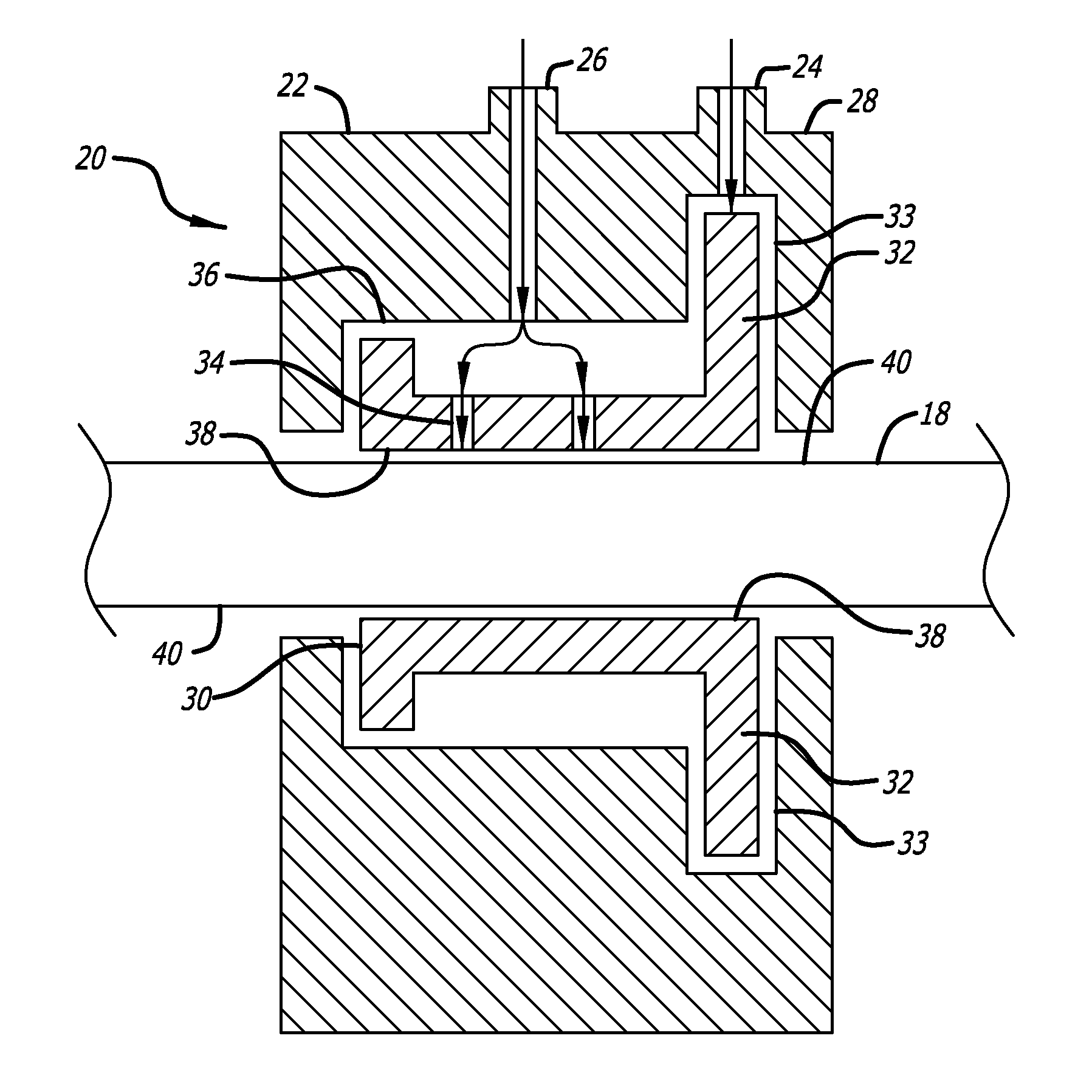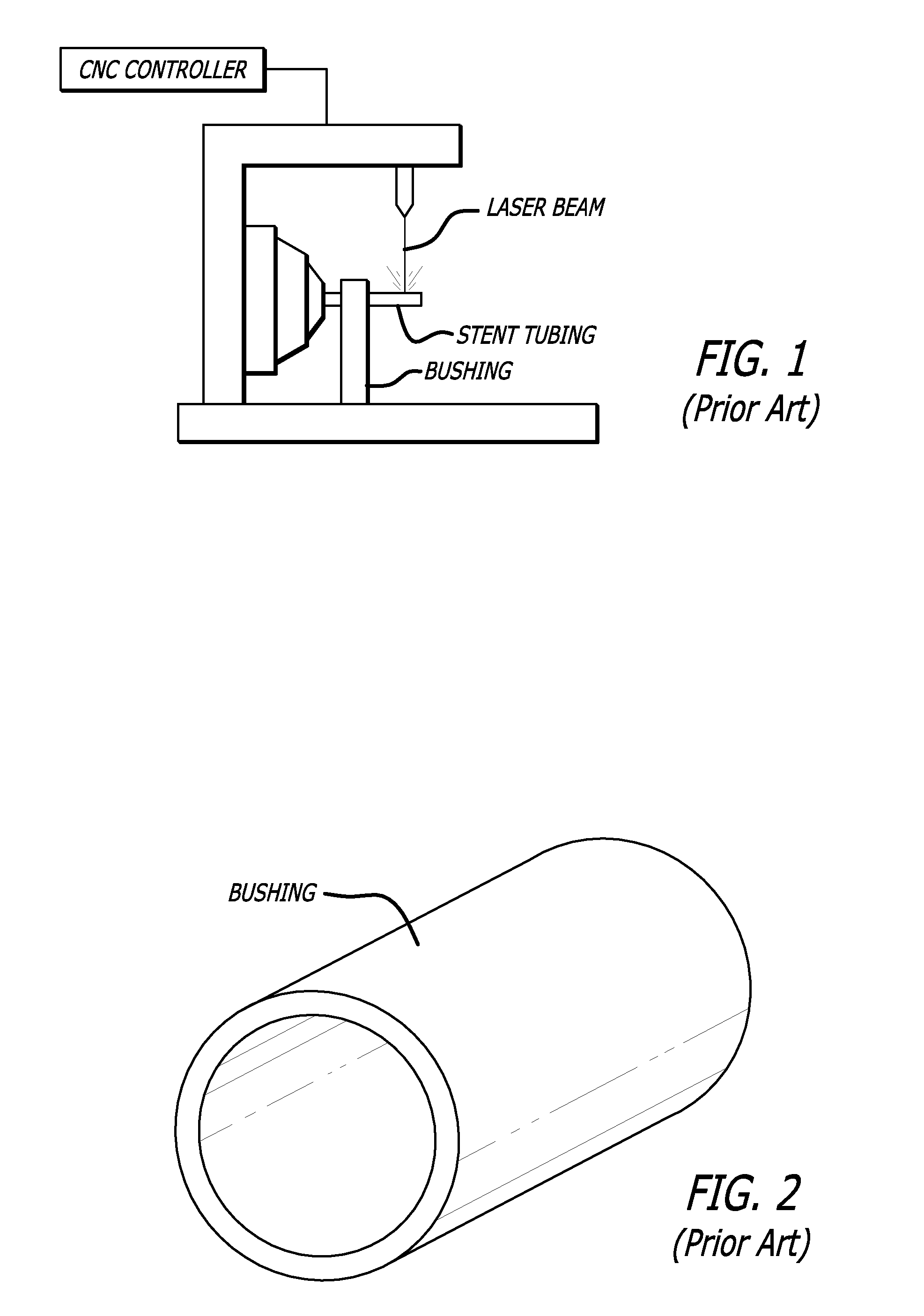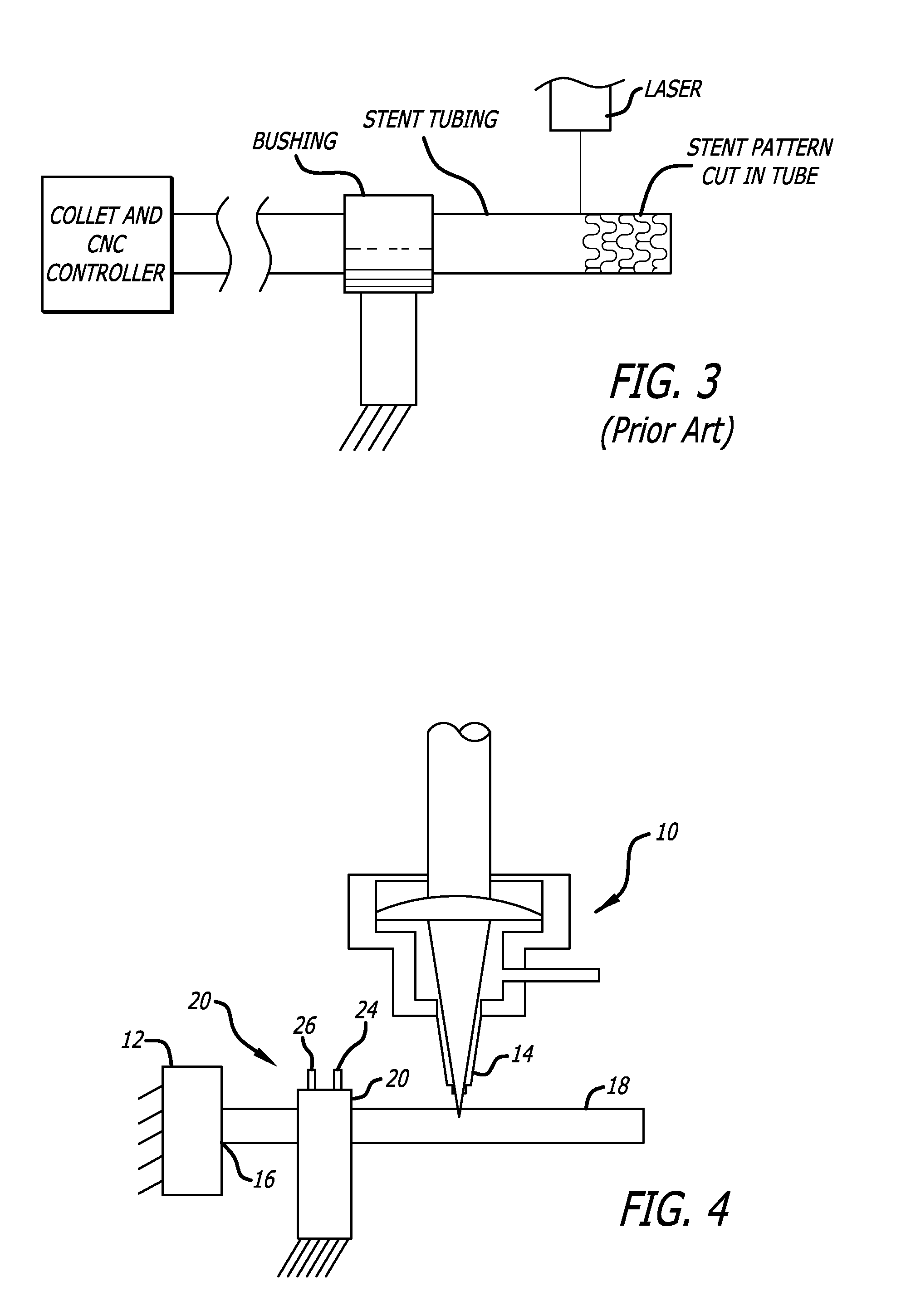Fluid bearing to support stent tubing during laser cutting
- Summary
- Abstract
- Description
- Claims
- Application Information
AI Technical Summary
Benefits of technology
Problems solved by technology
Method used
Image
Examples
Embodiment Construction
[0015]Referring to FIGS. 1-3, a typical prior art laser assembly is shown in which a laser beam is used to cut a pattern in stent tubing. The stent tubing is mounted in the collet of a CNC controller which will move the stent tubing in a translational and rotational direction while the laser beam cuts through one wall of the stent tubing to form a pattern. As shown, a bushing is used to support the stent tubing between the collet and the laser beam (or proximal to the laser beam). The prior art bushings typically support the stent tubing, however, because the inner diameter of the support bushing is closely matched to the outer diameter of the stent tubing, there is some amount of drag or friction between the bushing and the stent tubing. The control system must supply sufficient force to overcome the inertia of the tubing and the drag caused by the interface between the bushing and the stent tubing, and at the same time accurately position the stent tubing for laser cutting. It is ...
PUM
| Property | Measurement | Unit |
|---|---|---|
| Angular velocity | aaaaa | aaaaa |
| Pressure | aaaaa | aaaaa |
| Diameter | aaaaa | aaaaa |
Abstract
Description
Claims
Application Information
 Login to View More
Login to View More - R&D
- Intellectual Property
- Life Sciences
- Materials
- Tech Scout
- Unparalleled Data Quality
- Higher Quality Content
- 60% Fewer Hallucinations
Browse by: Latest US Patents, China's latest patents, Technical Efficacy Thesaurus, Application Domain, Technology Topic, Popular Technical Reports.
© 2025 PatSnap. All rights reserved.Legal|Privacy policy|Modern Slavery Act Transparency Statement|Sitemap|About US| Contact US: help@patsnap.com



